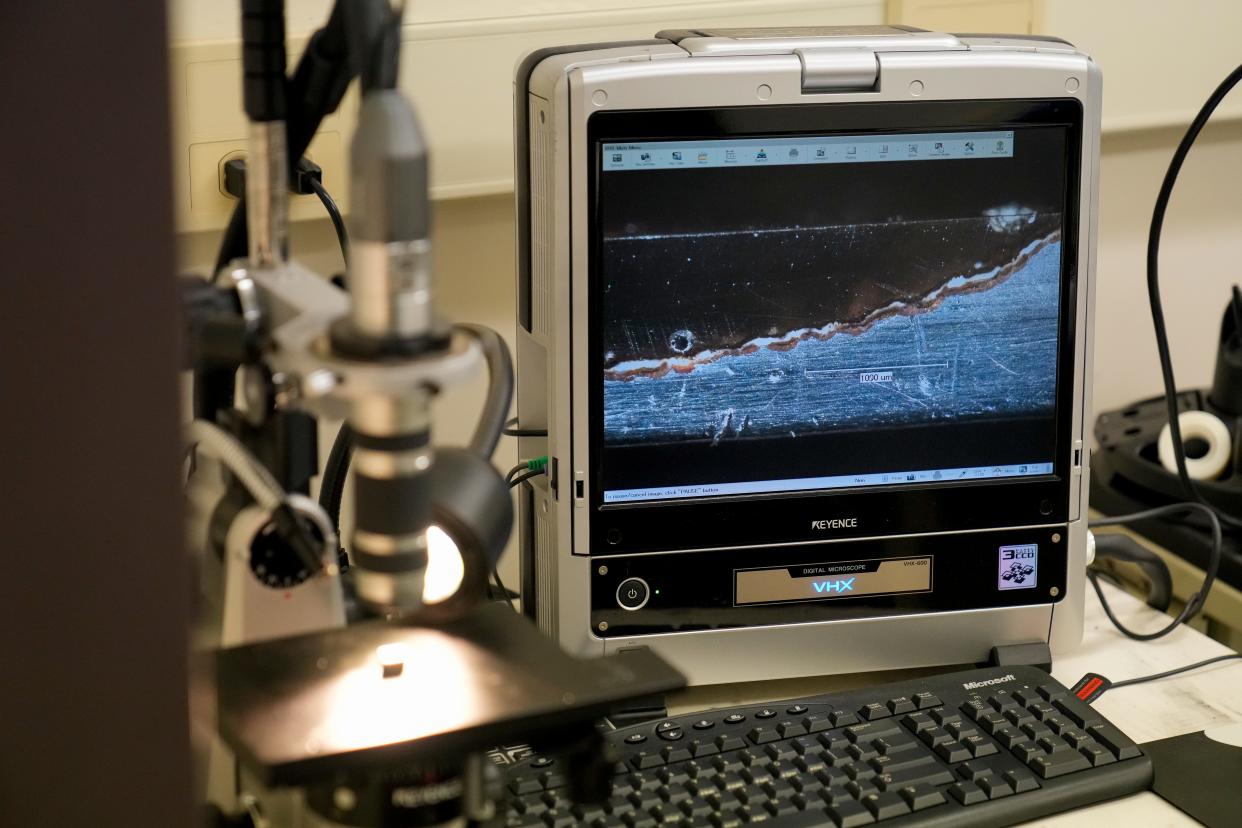The EPA wants all lead pipes replaced in 10 years. What that means in Greater Cincinnati

Editor's note: This story has been updated to correct information about the ruling's impact in Northern Kentucky.
The Environmental Protection Agency in November announced plans to require cities to replace all lead service lines in 10 years as part of the Biden administration's attempts to eliminate lead in drinking water.
The EPA says there are 9.2 million lead pipes in the United States. Exposure to lead in children, even at low levels, can lead to numerous health defects, including impaired hearing, learning disabilities, shorter stature and more.
Replacing the pipes will cost hundreds of millions of dollars in the Greater Cincinnati region. Here's what you need to know.
How many homes in the Greater Cincinnati area have lead pipes?
None of Greater Cincinnati Water Works' lines are made of lead, according to the Cincinnati Water Works website. However, plenty of water pipes connecting from homeowners' property lines to their residence are made of lead, especially in older homes.
Jeff Swertfeger, superintendent of water quality treatment at Water Works, said there are 36,500 houses in the Cincinnati area with lead pipes. The utility serves 1.1 million customers in Cincinnati and Hamilton, Butler and Warren counties.
Under its Enhanced Lead Program, Swertfeger said Water Works has been able to replace 1,200 lines per year. After the EPA's November announcement, the utility expects that number to increase to 3,600 lines per year or 10% of lead pipes in the region each year.
"We're paying for it," added Swertfeger, noting that Water Works pays all expenses for replacing lead pipes.
But customers must give Water Works permission to visit their homes to install new pipes, said Swertfeger. "We only get about half of the people who we contact who are willing to replace their part of the line."
What about Northern Kentucky?
Sara Sgantas, spokeswoman for the Northern Kentucky Water District, said there are around 30,000 lead pipelines in that utility's area of oversight, which includes 300,000 customers in Kenton, Campbell, and part of Boone counties.
While the NKY Water District generally doesn't replace customer-owned lead service lines, it does help customers diminish their impact, including adjusting pH balances and using additives on pipe material to prevent leaks. Customers are expected to pay for pipe replacement.
How much will it cost to replace lead pipes?
"We're looking at somewhere in the ballpark of $100 to $250 million dollars," said Swertfeger, with money coming from the 2021 bipartisan infrastructure law.
The NKY Water District is currently trying to secure funding from the same bill to address lead pipe replacement and complete its inventory of lead service lines. As those funds are being negotiated, customers will still be expected to pay for their own pipe replacement.
Who is paying?
The cost of lead pipe replacement will fall on public water systems, with the Biden administration offering money from the Bipartisan Infrastructure Bill to cover the project.
"The Biden-Harris administration is using every tool available to help communities and water systems Get the Lead Out – including investing a historic $15 billion through the Bipartisan Infrastructure Law to replace lead service lines, providing technical assistance to communities, and supporting the development of a national inventory of lead service lines," according to a Nov. 30 press release.
How do I know if lead pipes are near my home?
Cincinnati Water Works and NKY Water District customers can visit the Water Works website or the Northern Kentucky Water District's Take Action page to learn how to address lead pipes.
This article originally appeared on Cincinnati Enquirer: What the EPA's lead pipe plan means for Greater Cincinnati and NKY

